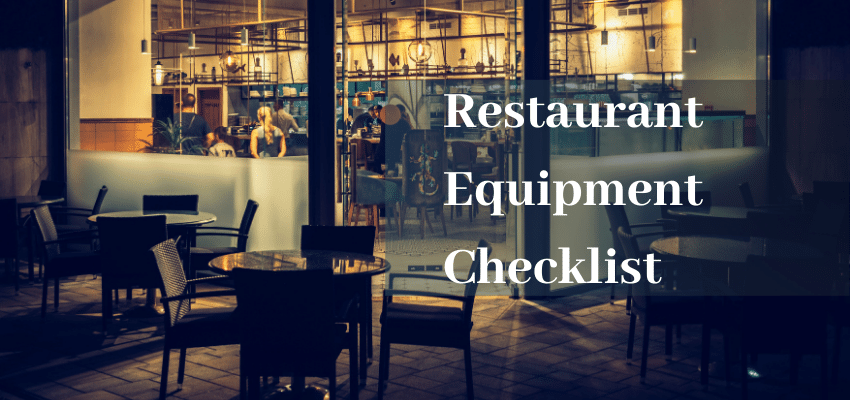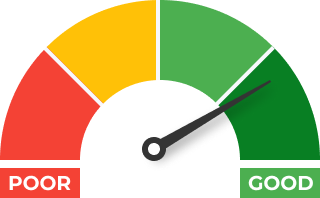Running a successful restaurant isn’t just about having the right employees and managing your operations smartly and wisely. You also need to have all the essential equipment to ensure that your team has everything they need to prepare food and move it quickly from the kitchen to your customer tables.
Check out this article to learn about the essentials in restaurant equipment.
1. The Importance of Having the Right Equipment
It doesn’t matter what type of restaurant you run, you’ll need the right equipment to prepare food, serve your menu to customers, and keep your restaurant running smoothly. Before buying equipment, come up with a customized plan for your restaurant operations, making a preliminary list of the equipment you’ll need.
Think of the following when buying equipment:
Know your menu
Make sure you fully know what food you’re serving your clientele and what it will take to prepare these foods.
Kitchen size
Measure your kitchen so you know that all the equipment you purchase will fit into the space. Don’t forget to factor in work space.
Budget
Think of the cost and ROI when buying equipment. You’ll need to recover the cost so keep ROI in mind when buying.
Choose top quality brands
Your restaurant equipment is going to have to withstand constant wear and tear. Choose brands that get good reviews from other restaurateurs.
Maintenance
Maintenance on larger kitchen equipment is important. To protect your investment, schedule regular maintenance.
2. The Expected Costs
One of the biggest costs for any restaurant is the kitchen. You can spend as little as $50,000 for a simple kitchen operation to more than $150,000 for a larger kitchen setup. Equipment and appliances are a necessary expense but the amount of money you spend can quickly add up.
Here’s what to consider when buying equipment:
- Kitchen equipment is an investment.
- Equipping your kitchen requires specific equipment if you have a specialized menu and restaurant theme.
- To cut back on costs, it’s okay to buy used equipment if it’s in good condition, but keep in mind that larger equipment, such as refrigerators, may no longer come with a warranty.
- Buy equipment that’s energy efficient. As you go through your checklist of equipment for your restaurant, consider buying equipment that’s energy efficient so you can maximize your profit margin. For instance, you can lower water consumption by choosing a dishwasher that uses pre-rinse valves and turns water off between rinse cycles.
3. Essential Restaurant Equipment For Your Operations.
A. Equipment for Refrigeration
Refrigeration is necessary to keep food fresh at a safe temperature and prevent it from spoiling. Depending on the size of your restaurant, you’ll need refrigerators and freezers of various capacities.
- Fridges: Choose from walk-in fridges to standalone to under the counter. For larger kitchens, and depending on the diversity of your menu, you may need to have more than one refrigerator. Ideally, you’ll want a fridge large enough to contain a week’s worth of food inventory.
- Freezers: Just like refrigerators, the size of freezer you require will depend on the size of your restaurant. Not only will freezers hold day to day items needed for food prep, they can also be cost effective for inventory management. Talk to your distributor about purchasing bulk food at a discount.
- Ice machine: An ice machine is essential for serving cold drinks such as sodas, water, and alcoholic beverages.
B. Cooking Equipment
Based on the menu and the specialized items you’re serving you’ll need different types of cooking equipment to prepare food correctly.
- Grills and griddles: Grills are versatile and can be used to cook a variety of foods from burgers to steak.
- Oven: Choose from electric or gas conventional ovens as well as convection ovens which use fans to move hot air for fast cooking.
- Range: Ranges are also available in electric or gas with either a flat surface or burner grates. Consider choosing one that has a salamander for broiling fish and meat and browning the tops of dishes.
- Deep fryer: Available in floor model or countertop styles, deep fryers aren’t just for preparing French fries. Use them to make chicken fingers, tempura, and calamari.
- Toaster: Commercial toasters are used to toast bagels, bread, buns, English muffins, and any other type of bread product. Options include conveyer or pop-up toasters.
- Microwave: Quickly re-heat food or defrost from frozen with a microwave. Choose a commercial microwave that can withstand higher volumes of food and heavy use.
- Coffee machine: It’s not just cafés that need a good coffee machine. Provide your customers with a good coffee experience by investing in a quality coffee maker. Choose a smaller coffee maker for moderate use or a commercial coffee brewer for higher volume.
- Warming equipment: Used to keep prepped food and sauces warm throughout the meal service at a safe temperature, warming equipment such as a steam table can be invaluable.
C. Food Preparation
Just as important as bigger cooking equipment are smaller appliances and tools for food prep.
- Tables for food prep: There a huge number of food prep tables to choose from, including those that have a backsplash and undershelves. The best choice are stainless steel tables that are easy to keep clean.
- Food processors: A time-saving and versatile appliance, food processors can be used for a variety of jobs, including chopping vegetables and thinly slicing cheese and meats.
- Blenders: It’s not just cafés and bars that need a blender – use this appliance to make dips, dressings, and sauces.
- Mixing machines: Commercial mixers come in both countertop and standing floor models. Use them for preparing your own pizza dough or making other baked goods.
- Coffee and spice grinders: Add uniqueness to your menu by grinding your own coffee beans and spices.
D. Dishwashing Equipment
For safe food handling you’ll need dishwashing equipment as well as utility sinks and handwashing stations.
- Dishwasher: A three-stage commercial dishwasher can clean kitchen tools and dishes in just a few minutes, reducing the labor time that it would take to wash by hand. There are many different models on the market – choose based on size and affordability. Buy a dishwasher that’s large enough to handle the volume of dishes you’ll need washed during your busiest service.
- Utility sink: You’ll need more than one sink for different purposes to avoid cross-contamination. For washing fruits and vegetables, install a single utility sink. You’ll also require a three-sink washing system to handwash larger tools and equipment as well as a sink that’s used just for mop water and sanitation.
- Handwashing station: A separate handwashing station ensures that all your employees have access just for this purpose and can follow safe food handling practices.
E. Tools for Food Prep
Your kitchen staff will need the right smallware in the kitchen to prep and cook the items on your menu.
- Knives: Having the right type of chef knives is indispensable and lets your kitchen staff cut, dice, and slice efficiently. Look for knives that are safe and comfortable to use with an ergonomic handle.
- Pots and pans: Before buying every different type of pot or pan available, determine what your kitchen staff will need to make the foods you’re serving. Will you need them to fry, sauté, braise, or boil?
- Bowls: Mixing bowls are essential for food prep – choose from a variety of different sizes.
- Spoons: Your kitchen will need a wide selection of spoons to use for prepping, cooking, and serving.
- Cutting boards: Cutting boards made from high density polyethylene are best for commercial kitchens to ensure food safety. To prevent cross contamination, consider color coding your cutting boards so those used for meats aren’t used for vegetables.
- Large food pans: Large food pans are ideal for holding cooked foods and keeping them warm in the oven or on the warming table.
- Tongs and flippers: Kitchen staff will get a lot of use out of tongs and flippers, which can be used for food prep and serving, grabbing hot pans, and lowering and lifting foods from hot pots.
F. Equipment for Storage
Your restaurant will need storage equipment to store food ingredients, dinner and servingware, and other miscellaneous items so you can stay organized.
- Containers for food storage: Choose storage containers of multiple sizes for storing dry ingredients, such as flour and pasta, as well as food ingredients that have been prepped ahead of time, such as sauces and salad ingredients. Containers that can be labeled or have colored lids are a good option to speed up kitchen efficiency so staff can quickly identify what they need.
- Shelving: Shelving can provide even more organization in the kitchen for storing everything from dry ingredients to cooking pots and pans. Customize shelves according to space, storing less used items at the top.
- Utility carts: Taking up minimal room, utility carts are versatile and can be used to transport items from the freezer or other storage areas to the kitchen. Carts can also be used for bussing tables.
- Air drying racks: Heavy-duty racks provide space for air drying kitchen tools and equipment as well as dinnerware and cutting boards.
G. Janitorial and cleaning equipment
Anything you need to maintain a sanitary and safe workspace will fill under the category of janitorial and cleaning equipment.
- Mops and buckets: Use dry and wet mops along with mop buckets to clean up at the end of service as well as during the day to clean up messes as they occur.
- Cleaning sponges: Keep kitchen equipment, pots and pans, and tools clean using abrasive sponges, cleaning scrubbers, and soft sponges. Consider buying these items in bulk.
- Cleaning cloths: Use microfiber cloths and dish towels to clean and wipe kitchen equipment.
- Garbage bins: Place garbage bins in several places in the kitchen for ease of use.
- Recycle bins: Place recycle bins near the kitchen food prep areas.
- Cleaning chemicals: Use non-toxic chemicals to clean all areas of the kitchen, including general cleaners, degreasers, and surface sanitizers.
- Bathroom cleaning equipment: Keep bathrooms clean with specialized equipment and cleaners, including disinfectants and sanitizers. Keep these cleaning products in a separate section of the kitchen or in another storage area.
4. Conclusion
Owning the right type of commercial kitchen equipment is an important aspect of operating your own restaurant. The equipment listed here will help you store and prepare food professionally and safely. Whether you’re opening a new kitchen or updating one that’s already existing, outline which equipment is going to add to the success of your business. You’ll be able to increase efficiency and provide your kitchen staff with the tools they need to make your kitchen service a success.

Business Insights With Glimpse

Glimpse provides business analytics and loss prevention technology for bars, restaurants and nightclubs.
Learn More








 +1 (786) 292-2373
+1 (786) 292-2373 insights@glimpsecorp.com
insights@glimpsecorp.com





